
How to Use Buck-Boost Converter: Examples, Pinouts, and Specs
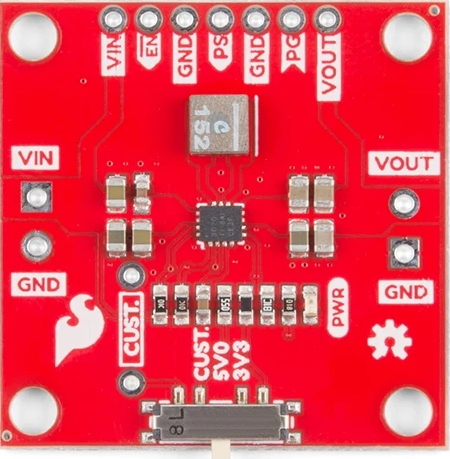
 Design with Buck-Boost Converter in Cirkit Designer
Design with Buck-Boost Converter in Cirkit DesignerIntroduction
The Buck-Boost Converter (SparkFun COM-15208) is a versatile DC-DC converter capable of stepping up (boosting) or stepping down (bucking) an input voltage to achieve a stable output voltage. This functionality makes it ideal for applications where the input voltage can vary but a consistent output voltage is required. It is widely used in battery-powered devices, renewable energy systems, and embedded electronics.
Explore Projects Built with Buck-Boost Converter
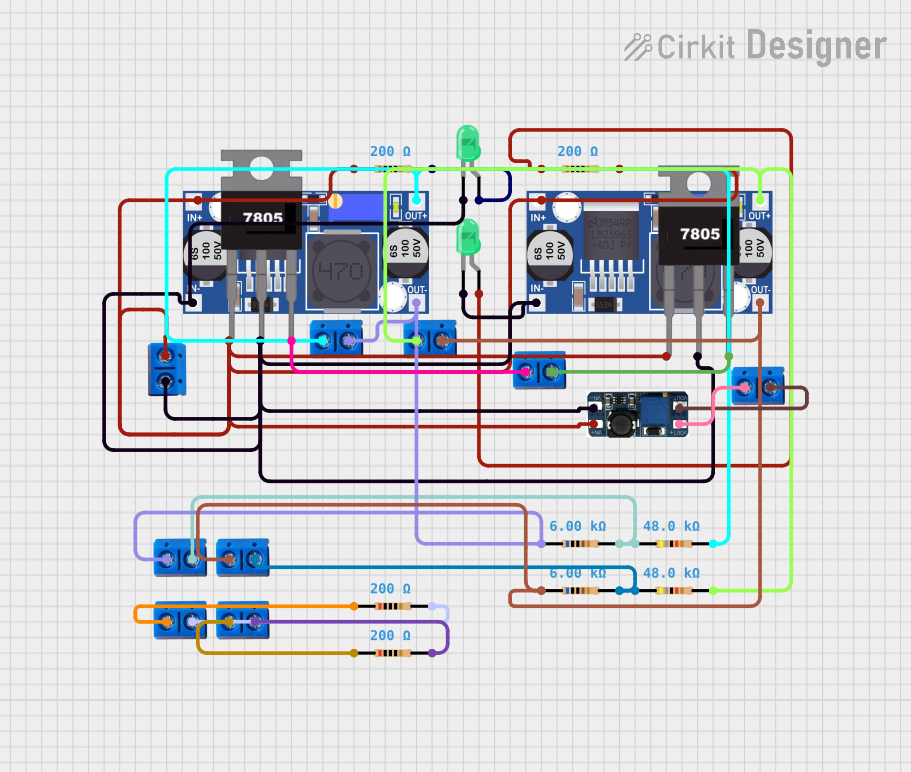
 Open Project in Cirkit Designer
Open Project in Cirkit Designer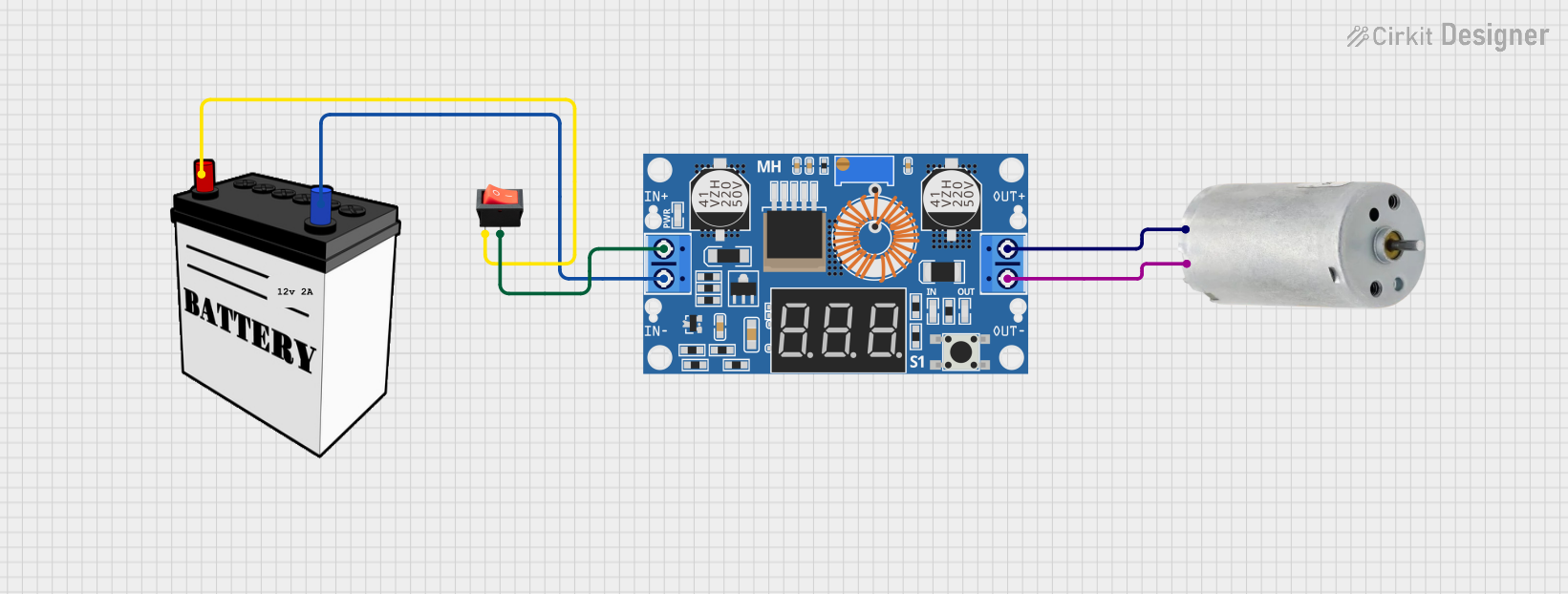
 Open Project in Cirkit Designer
Open Project in Cirkit Designer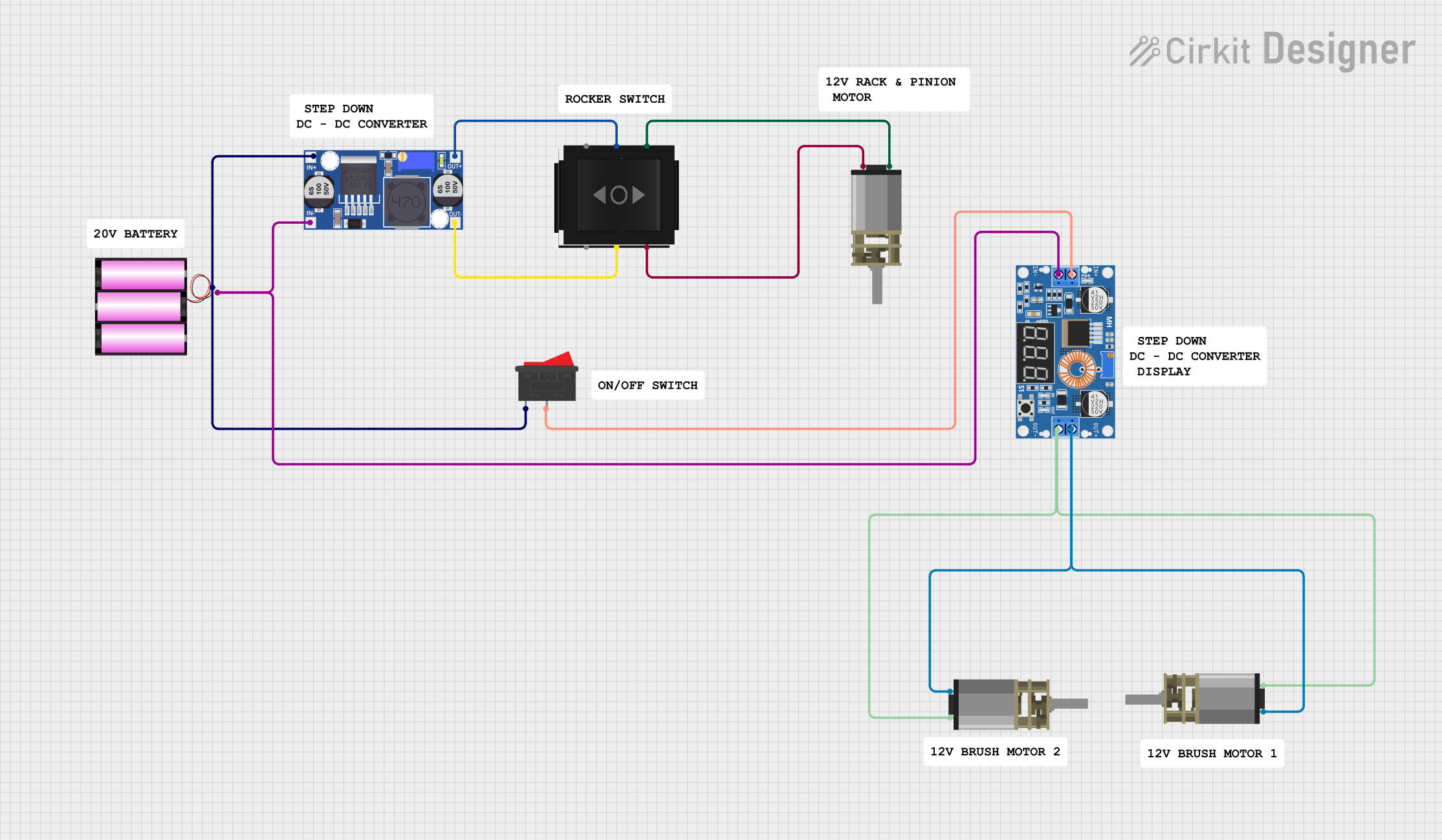
 Open Project in Cirkit Designer
Open Project in Cirkit Designer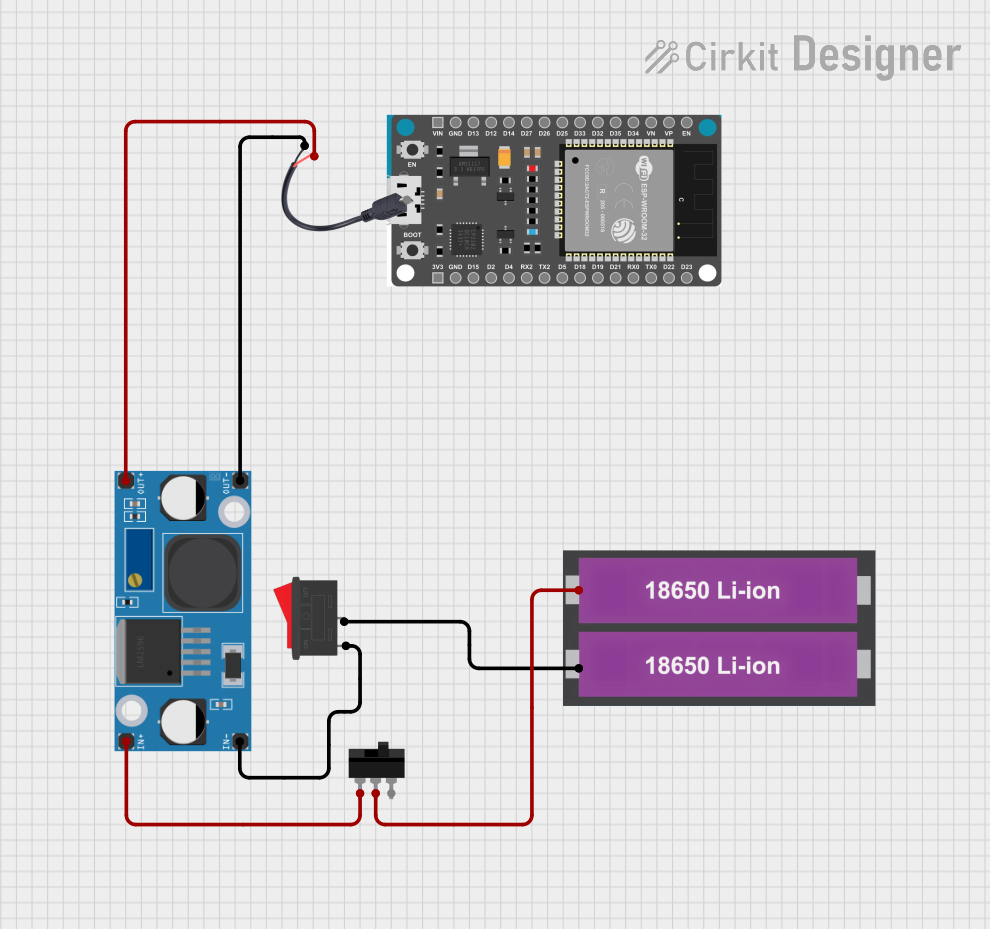
 Open Project in Cirkit Designer
Open Project in Cirkit DesignerExplore Projects Built with Buck-Boost Converter

 Open Project in Cirkit Designer
Open Project in Cirkit Designer
 Open Project in Cirkit Designer
Open Project in Cirkit Designer
 Open Project in Cirkit Designer
Open Project in Cirkit Designer
 Open Project in Cirkit Designer
Open Project in Cirkit DesignerCommon Applications and Use Cases
- Powering microcontrollers and sensors from batteries with fluctuating voltage levels.
- Regulating voltage in portable devices such as smartphones, tablets, and wearables.
- Renewable energy systems, such as solar panels, where input voltage varies with environmental conditions.
- Automotive electronics to stabilize voltage from a car battery.
- Any circuit requiring a stable voltage output from a variable input source.
Technical Specifications
The following table outlines the key technical details of the SparkFun COM-15208 Buck-Boost Converter:
| Parameter | Value |
|---|---|
| Input Voltage Range | 2.7V to 11.8V |
| Output Voltage Range | 2.5V to 9.0V (adjustable via potentiometer) |
| Maximum Output Current | 2A (depending on input/output conditions) |
| Efficiency | Up to 90% (varies with load and voltage) |
| Switching Frequency | 1.2 MHz |
| Dimensions | 22.9mm x 20.3mm |
| Operating Temperature | -40°C to +85°C |
Pin Configuration and Descriptions
The SparkFun COM-15208 Buck-Boost Converter has the following pinout:
| Pin Name | Description |
|---|---|
| VIN | Input voltage pin (connect to the power source). |
| GND | Ground pin (common ground for input and output). |
| VOUT | Output voltage pin (connect to the load). |
| EN | Enable pin (active high, enables the converter). |
| FB | Feedback pin (used for voltage regulation). |
Usage Instructions
How to Use the Buck-Boost Converter in a Circuit
Connect the Input Voltage (VIN):
- Attach the positive terminal of your power source to the VIN pin.
- Connect the negative terminal of your power source to the GND pin.
Set the Desired Output Voltage:
- Use the onboard potentiometer to adjust the output voltage.
- Measure the output voltage at the VOUT pin using a multimeter while adjusting the potentiometer.
Connect the Load:
- Attach the positive terminal of your load to the VOUT pin.
- Connect the negative terminal of your load to the GND pin.
Enable the Converter:
- Ensure the EN pin is pulled high (connect to VIN or a logic high signal) to enable the converter.
- If the EN pin is left floating or pulled low, the converter will be disabled.
Important Considerations and Best Practices
- Input Voltage Range: Ensure the input voltage remains within the specified range (2.7V to 11.8V) to avoid damaging the converter.
- Output Current Limit: Do not exceed the maximum output current of 2A to prevent overheating or failure.
- Heat Dissipation: For high current loads, consider adding a heatsink or improving airflow around the converter to manage heat.
- Noise Filtering: Add input and output capacitors (e.g., 10µF to 100µF) close to the VIN and VOUT pins to reduce noise and improve stability.
- Feedback Pin (FB): Avoid accidental connections to the FB pin, as it is used internally for voltage regulation.
Example: Using the Buck-Boost Converter with an Arduino UNO
The Buck-Boost Converter can be used to power an Arduino UNO from a battery. Below is an example circuit and code:
Circuit Connections
- Connect the battery's positive terminal to the VIN pin of the converter.
- Connect the battery's negative terminal to the GND pin of the converter.
- Adjust the output voltage to 5V using the potentiometer.
- Connect the VOUT pin of the converter to the 5V pin of the Arduino UNO.
- Connect the GND pin of the converter to the GND pin of the Arduino UNO.
Arduino Code Example
// Example code to read a sensor powered by the Buck-Boost Converter
// Ensure the converter is set to output 5V for the Arduino UNO
const int sensorPin = A0; // Analog pin connected to the sensor
int sensorValue = 0; // Variable to store the sensor reading
void setup() {
Serial.begin(9600); // Initialize serial communication at 9600 baud
pinMode(sensorPin, INPUT); // Set the sensor pin as input
}
void loop() {
sensorValue = analogRead(sensorPin); // Read the sensor value
Serial.print("Sensor Value: ");
Serial.println(sensorValue); // Print the sensor value to the Serial Monitor
delay(1000); // Wait for 1 second before the next reading
}
Troubleshooting and FAQs
Common Issues and Solutions
No Output Voltage:
- Cause: The EN pin is not connected or is pulled low.
Solution: Ensure the EN pin is connected to VIN or a logic high signal. - Cause: Input voltage is outside the specified range.
Solution: Verify the input voltage is between 2.7V and 11.8V.
- Cause: The EN pin is not connected or is pulled low.
Output Voltage is Incorrect:
- Cause: The potentiometer is not adjusted correctly.
Solution: Use a multimeter to measure and adjust the output voltage. - Cause: Excessive load current.
Solution: Ensure the load current does not exceed 2A.
- Cause: The potentiometer is not adjusted correctly.
Overheating:
- Cause: High current draw or poor ventilation.
Solution: Reduce the load current or improve heat dissipation with a heatsink.
- Cause: High current draw or poor ventilation.
Noise or Instability:
- Cause: Insufficient input/output capacitors.
Solution: Add capacitors (10µF to 100µF) close to the VIN and VOUT pins.
- Cause: Insufficient input/output capacitors.
FAQs
Q: Can the Buck-Boost Converter handle reverse polarity on the input?
A: No, the converter does not have reverse polarity protection. Always ensure correct polarity when connecting the input voltage.
Q: Can I use the Buck-Boost Converter to power a Raspberry Pi?
A: Yes, but ensure the output voltage is set to 5V and the load current does not exceed 2A.
Q: How do I know if the converter is working correctly?
A: Measure the output voltage with a multimeter and verify it matches the desired value. Additionally, check for stable operation under load.
Q: Can I use the Buck-Boost Converter with a solar panel?
A: Yes, as long as the solar panel's output voltage is within the input range (2.7V to 11.8V).